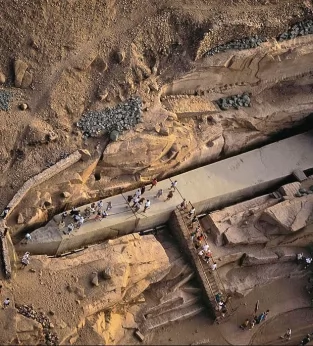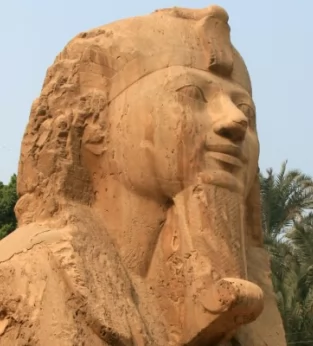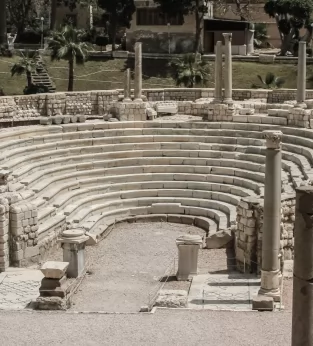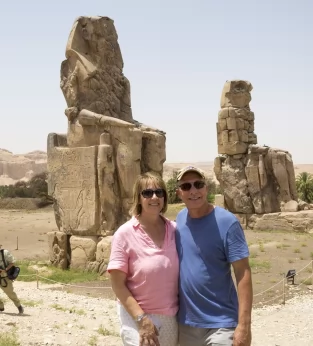Stay updated!
Tell el-Amarna is one of Egypt's most fascinating and historically significant archaeological sites. Once the capital city built by Pharaoh Akhenaten, it provides a rare glimpse into the unique Amarna Period, a time marked by revolutionary ideas and cultural transformation.
Visitors to the City of Amarna can explore the extensive ruins, gaining insight into Akhenaten's groundbreaking monotheistic religion as well as the artistic and social changes that defined his reign.
The site features ruins of unique temples, residences and tombs, reflecting the innovations of this era.
The Amarna Period remains a subject of intrigue and study, offering an unparalleled look at ancient Egypt's evolution.
Inside Egypt offers exclusive, high-end tours that immerse travelers in the extraordinary history and architecture of Tell el-Amarna. With an English-speaking Egyptology expert as your tour guide, you will not only see the ruins but also understand their profound significance in the context of Egyptian history.
Visiting this remarkable archaeological site is a highlight of our long Nile cruise from Cairo to Luxor and Aswan, which takes place only once a year. Don't miss your chance to experience the wonders of Tell el-Amarna!
Photos of Tell el-Amarna
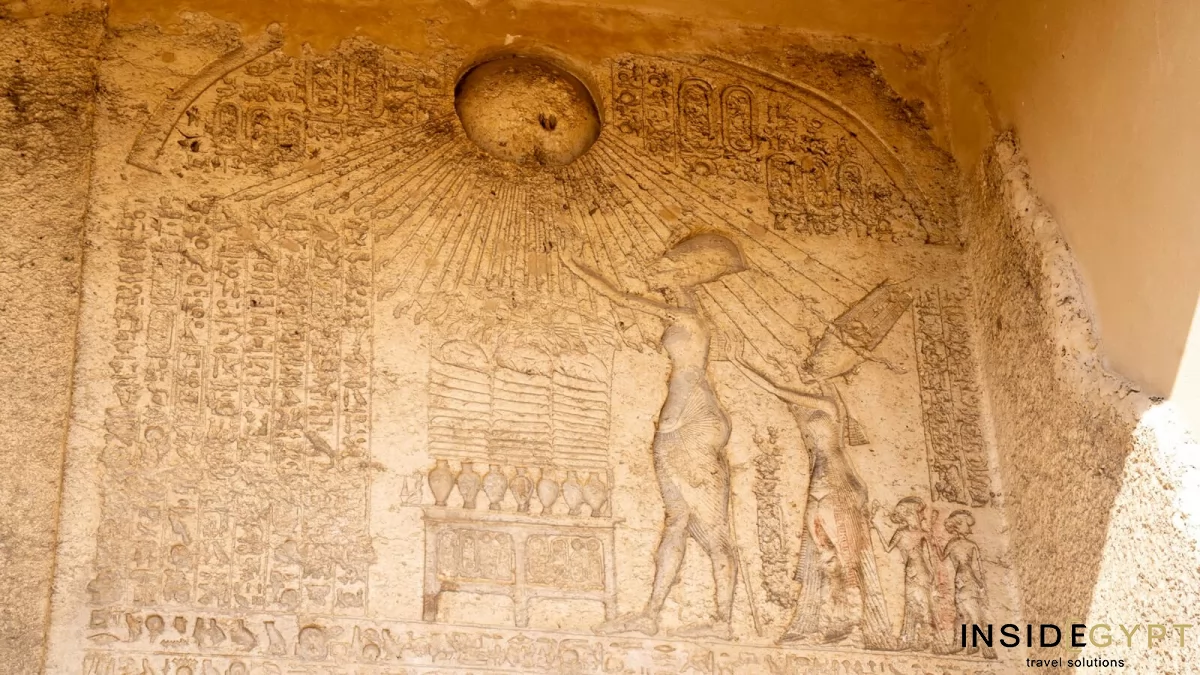
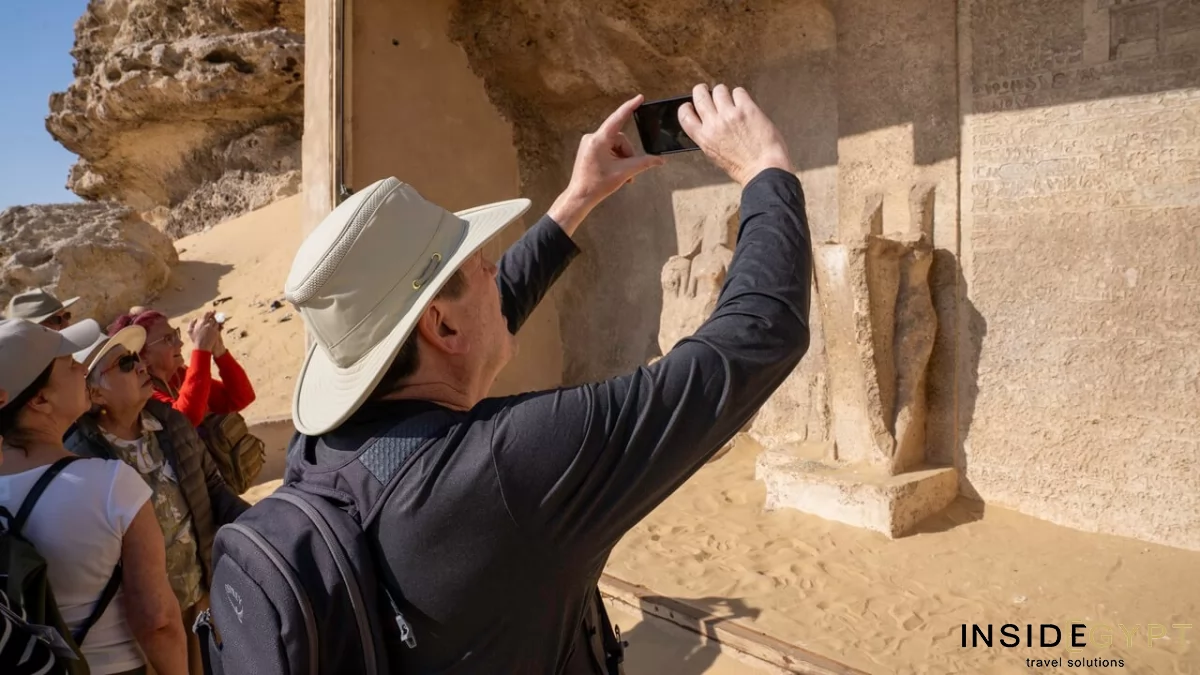




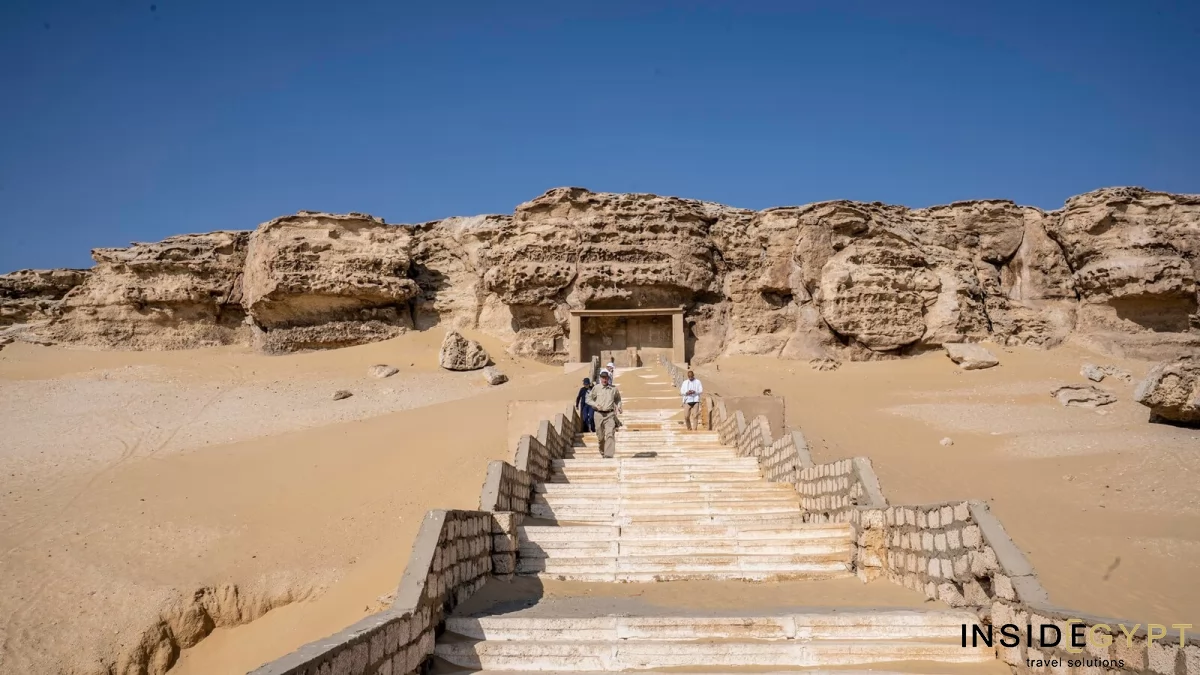

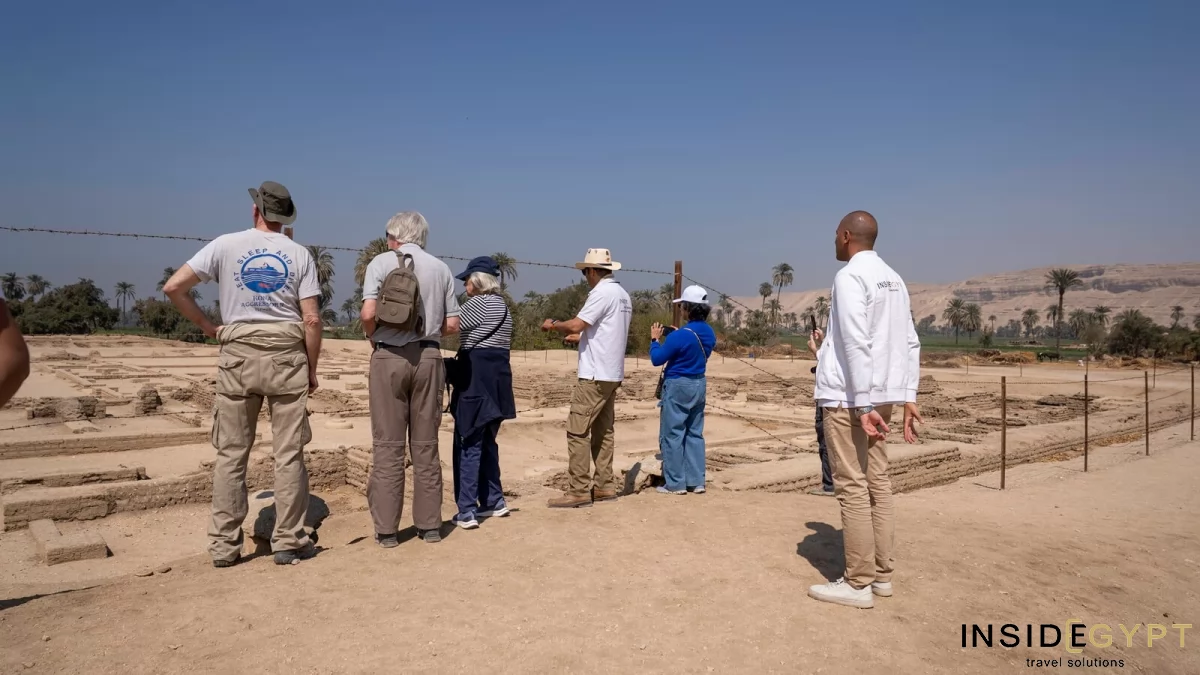
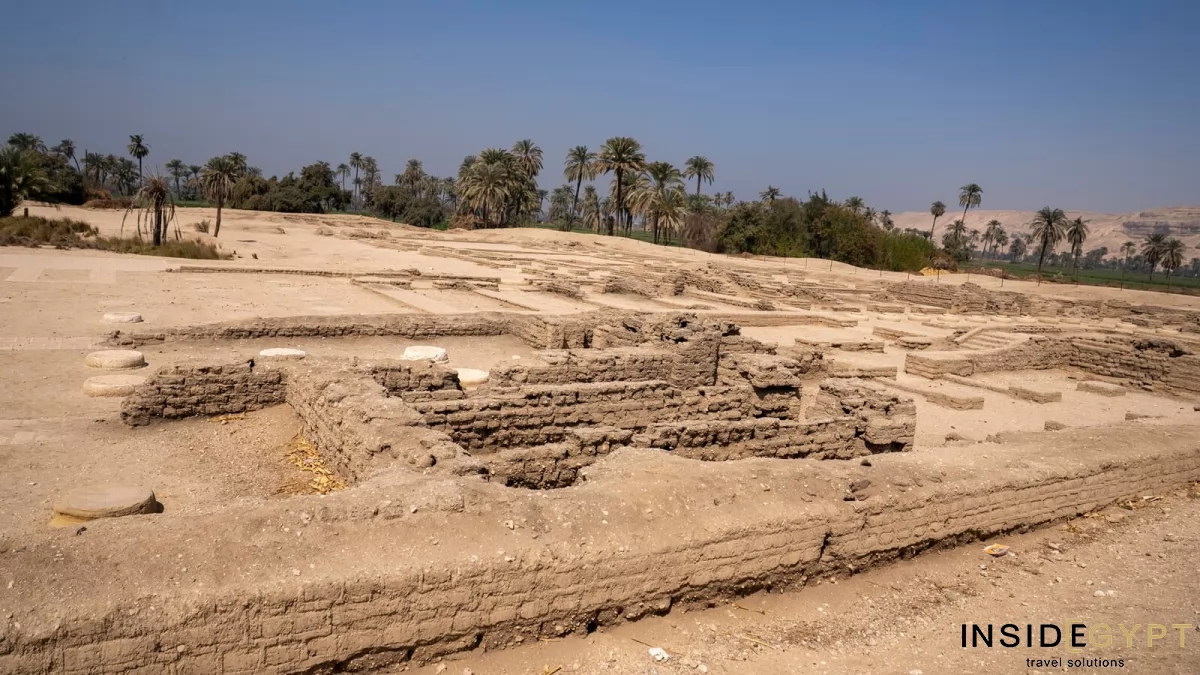
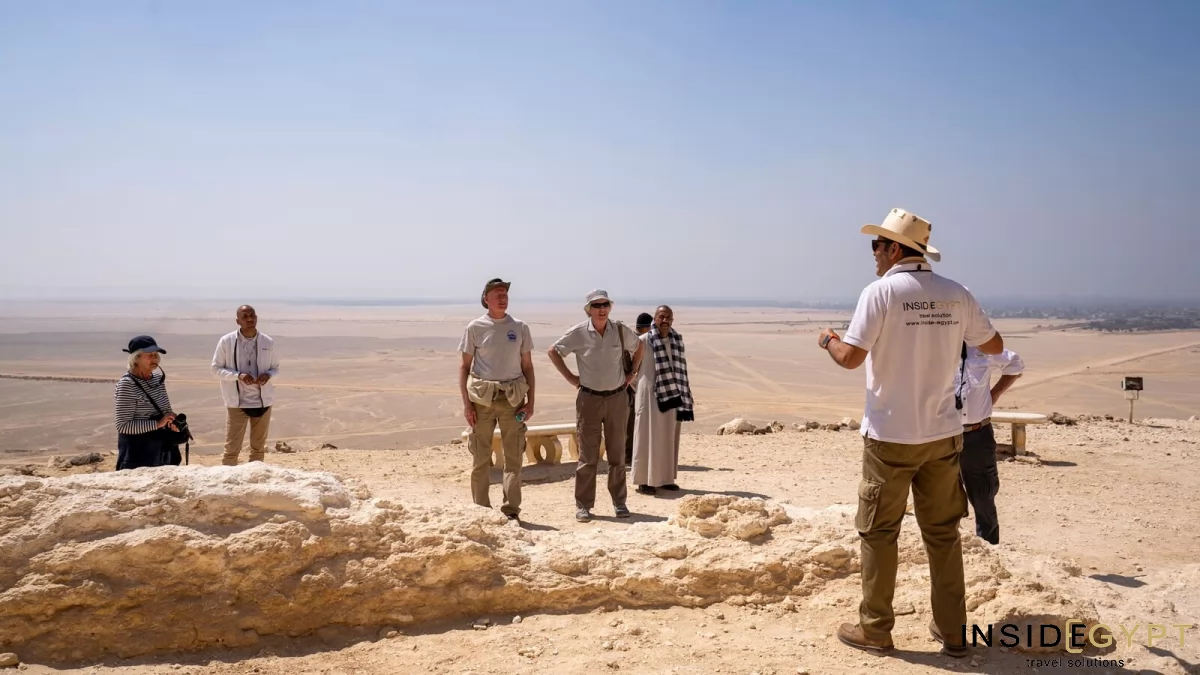
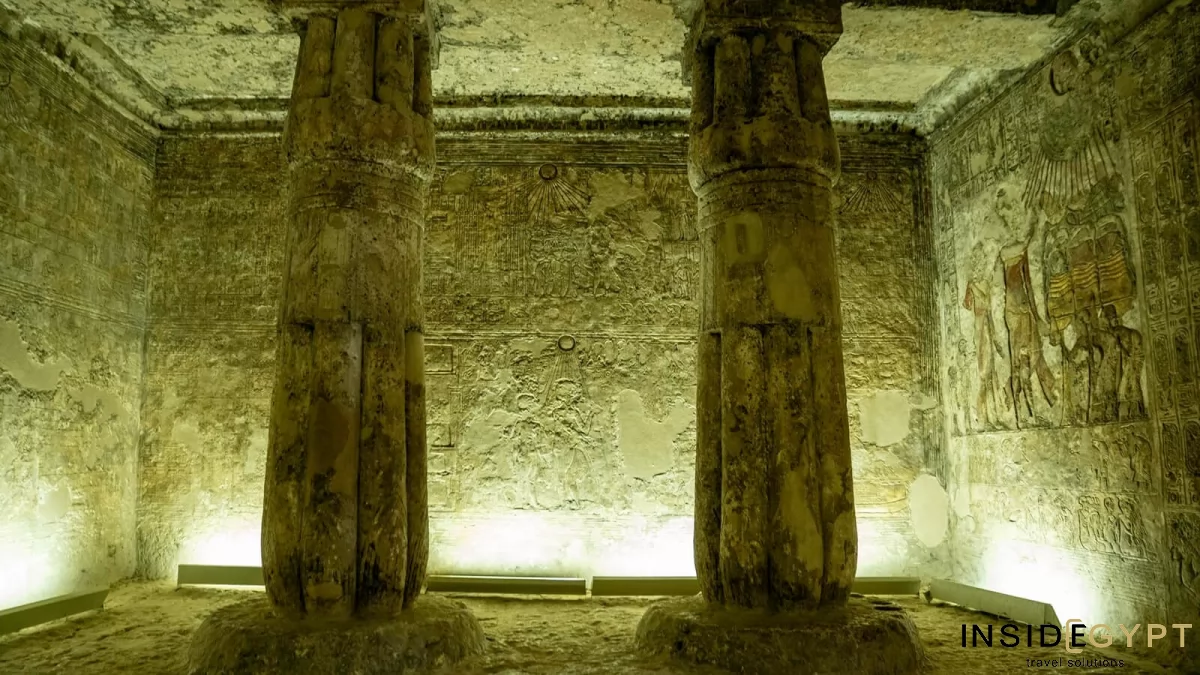
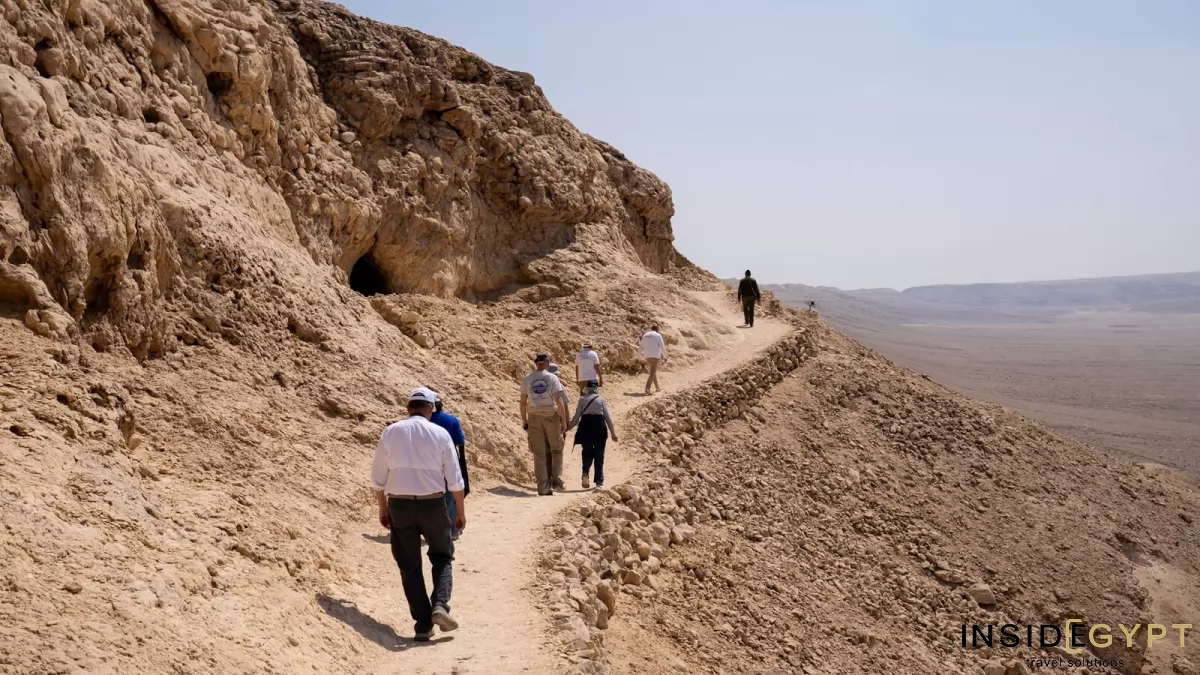
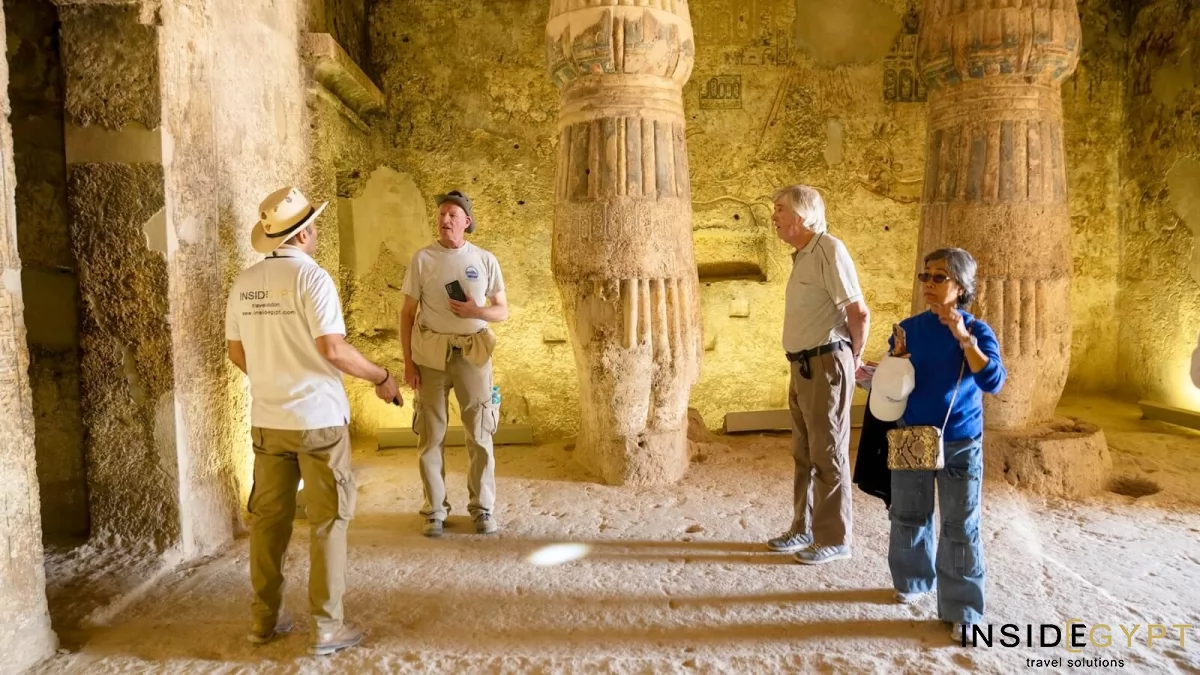
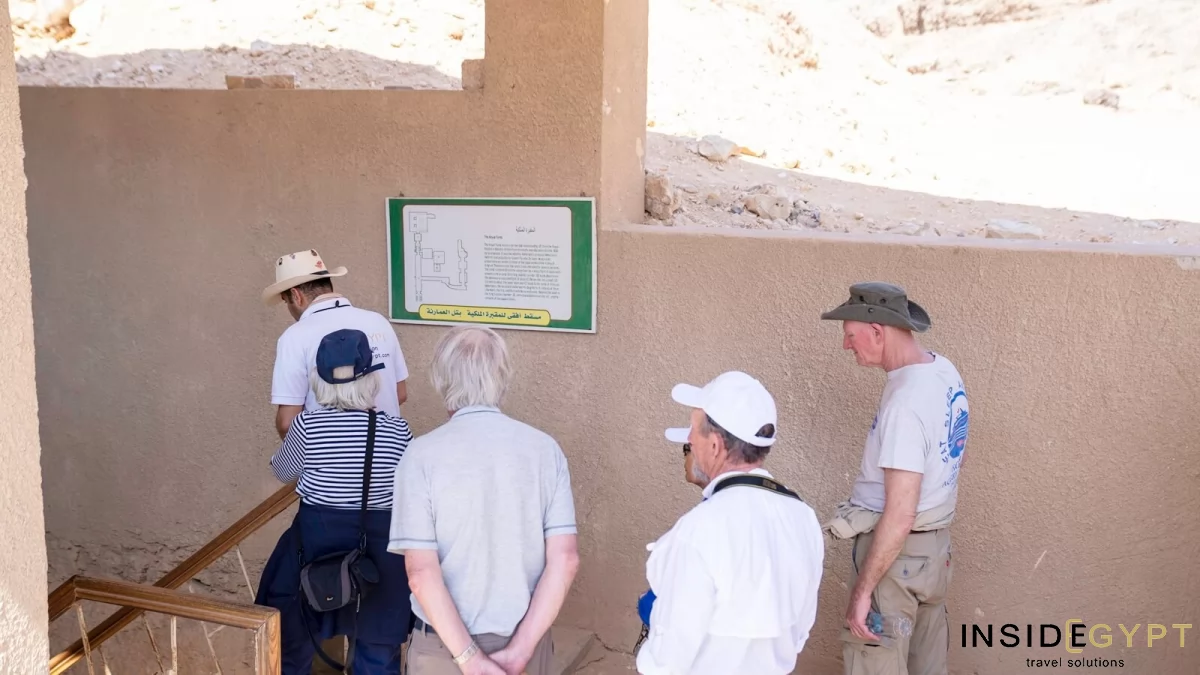
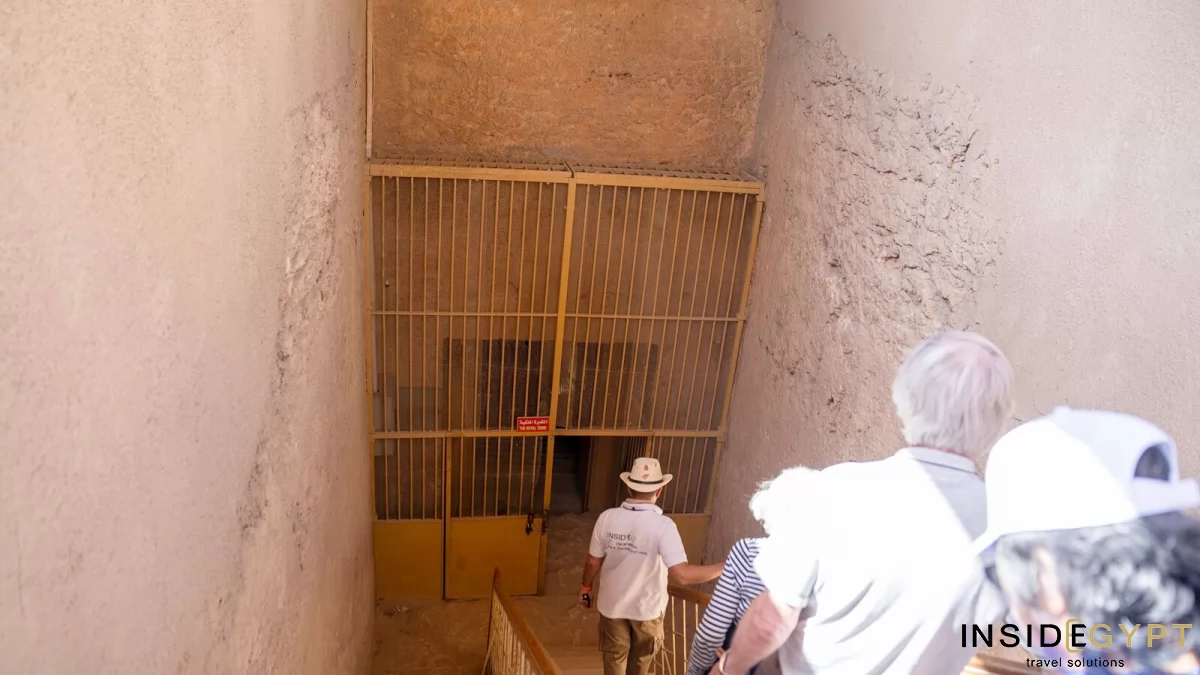
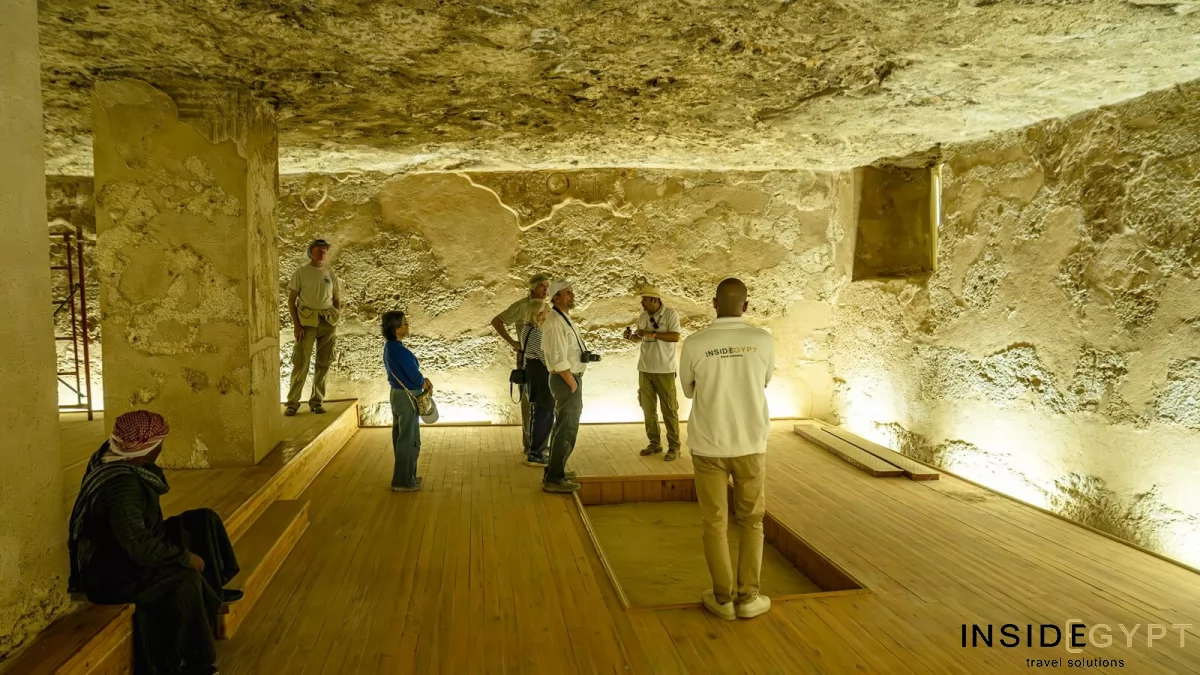
Discover Our Exclusive Egypt Tours
Tour Reviews
FAQs About Tell el-Amarna, Egypt
What is Tell el-Amarna, and why is it significant?
.webp)
Tell el-Amarna, Egypt, was the short-lived capital city established by Pharaoh Akhenaten during the 18th Dynasty. This site holds immense significance as it served as the center for Akhenaten's radical shift towards monotheism, primarily worshiping the sun deity Aten. The City of Akhenaten represents a remarkable departure from traditional Egyptian religious practices and offers invaluable insights into the cultural and artistic transformations of this era.
The archaeological remains found at Tell el-Amarna provide a unique window into the Amarna Period, showcasing the architectural innovations and artistic styles that flourished during Akhenaten's reign. The city's layout, featuring royal palaces, residential areas, and temples, such as the lost Temple of Aten,reflects the visionary nature of Akhenaten's governance and religious reforms.
Additionally, the Amarna Letters, diplomatic correspondences found at the site, offer a glimpse into the international relations of ancient Egypt during this transformative time. Understanding Tell el-Amarna enables scholars and visitors alike to grasp the complexities of Akhenaten's capital and its lasting impact on Egyptian history. This extraordinary archaeological site continues to fascinate and inspire those who seek to learn about Egypt's rich cultural heritage.
What is the history of the city of Amarna and the Amarna Period?
.webp)
Amarna City, founded around 1346 BCE by Pharaoh Akhenaten, marked a revolutionary shift in ancient Egypt. Akhenaten established the city to promote the worship of Aten, the sun god who makes up the disk of the sun, and to diminish the power of traditional priesthoods, particularly that of Amun. This period, known as the Egyptian Amarna Period, is characterized by significant artistic innovations, including more naturalistic sculptures and reliefs, as seen in the tomb of Akhenaten.
Key developments of this era included the construction of the Temple of Aten in Amarna, which served as the focal point for the new monotheistic worship. The Amarna Tablets, a series of diplomatic correspondences, provide insight into this unique period, showcasing international relations and governance issues.
After Akhenaten's death, the city was abandoned, largely due to the return to traditional polytheistic beliefs and the reinstatement of the powerful priesthoods. The subsequent rulers, including Tutankhamun, moved the capital back to Thebes, effectively ending the unique cultural and religious experiments initiated during the Amarna Period.
Who was Akhenaten?
.webp)
Akhenaten, one of Egypt's most enigmatic and controversial pharaohs, ruled from 1353 to 1336 BCE during the Amarna Period. He is renowned for initiating a radical religious reform by shifting Egypt from polytheism to the worship of a single deity, Aten, the sun disk. This transformation culminated in the establishment of the city of Amarna, which served as the capital and center for the worship of Aten.
Akhenaten's legacy is closely linked to his famous wife, Nefertiti, whose beauty and influence are well-documented, as well as to their son, Tutankhamun, who later restored traditional polytheistic practices after Akhenaten's reign.
Akhenaten's impact on religion and art was profound, leading to more expressive and naturalistic representations in sculpture and reliefs. However, his reforms faced backlash after his death, resulting in a return to the old religious order. His unique reign, though short-lived, has continued to fascinate historians and archaeologists, securing his place in history as a pivotal figure in ancient Egypt.
What are the Amarna Letters, and where can I see them?
.webp)
The Amarna Letters are a remarkable collection of diplomatic correspondence dating from the 14th century BCE, discovered at Tell el-Amarna, the city founded by Pharaoh Akhenaten. These clay tablets, written primarily in Akkadian, the diplomatic language of the time, provide invaluable insights into the international relations, political alliances, and conflicts faced by Egypt during Akhenaten's reign. The letters include correspondences with various kingdoms, highlighting the complexities of diplomacy in the ancient world.
Today, visitors can view the Amarna Tablets in various renowned institutions around the world. The Egyptian Museum in Cairo houses several of these artifacts, allowing guests to explore Egypt's rich history in the context of its foreign relations. Similarly, the British Museum in London features a significant collection of these tablets, making them accessible to a global audience. These museums offer an opportunity to appreciate the historical significance of the Amarna Letters and their role in understanding the dynamics of ancient diplomacy during the Amarna Period.
Can I visit Tell el-Amarna today, and how?
.webp)
Visiting Tell el-Amarna, the ancient city of Akhenaten, offers a fascinating glimpse into Egypt's history. Located in Minya Governorate, Middle Egypt, about 322 km south of Cairo, it takes about four hours to drive there. If you're coming from Luxor, prepare for a longer journey of around 430 km, which takes nearly five hours northwest.
To make the most of your visit to el-Amarna, consider joining Inside Egypt's exclusive guided tours. These tours provide comprehensive access to the site and expert insights into the significance of this remarkable archaeological treasure. Since group tours are rarely organized to this remote location, a private tour ensures you receive a tailored experience rich in history and context.
While exploring Amarna, Egypt, you'll encounter the remnants of Akhenaten's capital, offering a unique perspective on ancient Egyptian civilization. Inside Egypt also hosts a long Nile cruise each spring, allowing you to visit el-Amarna and other lesser-known sites like tombs of Tuna el-Gebel, tombs in Beni Hasan, Abydos temple, and Temple of Dendera. This option is ideal for history and archaeology enthusiasts seeking to delve deeper into Egypt's past.
What is there to see and do in modern el-Amarna?
Modern el-Amarna, the site of ancient Akhenaten's capital, offers intriguing attractions that immerse visitors in Egypt's rich history and stunning landscapes. Key highlights include the Northern and Southern Tombs, where you can marvel at intricate carvings and ancient burial practices. The Northern Tombs feature well-preserved wall paintings, depicting daily life and religious rituals.
Akhenaten's tomb, designated as Tomb 16 and located in the royal wadi of Tell el-Amarna, is a key feature of his capital, showcasing Amarna period architecture. It includes rock-carved chambers and is adorned with scenes of Akhenaten, Nefertiti, and their daughters, highlighting a shift to more intimate representations. Prominent images of the Aten, Akhenaten's worshiped sun disk, reflect his religious reforms. The unfinished tomb indicates the abrupt decline of his reign, and the exact burial location of Akhenaten remains a mystery, with theories suggesting the Valley of the Kings. This tomb is crucial for understanding Akhenaten's innovative reign and the Amarna period's cultural legacy.
Another significant attraction is the ruins of the Great Aten Temple, which showcases the grandeur of Akhenaten's worship of the sun god. Its expansive ruins highlight the importance of the Aten cult, while the nearby Small Aten Temple offers a more intimate glimpse into his religious devotion.
Visitors can also explore the remnants of the Royal Palace, where the architectural layout reveals insights into the daily life of Akhenaten and his family. Beyond the archaeological site, the surrounding villages provide a chance to experience local culture and hospitality in this tranquil desert setting.
The serene landscape surrounding the ancient ruins invites exploration, perfect for hiking or simply enjoying the picturesque views of the Nile and barren desert. El-Amarna is not only a historical treasure trove but also a beautiful oasis for those seeking a unique connection to Egypt's past.
What are some interesting facts about Tell el-Amarna?
Tell el-Amarna, the former capital established by Akhenaten, is steeped in intrigue and history. One fascinating aspect is its rapid construction and subsequent abandonment; the city was built in just 10 years around 1346 BCE but was largely deserted within a few decades after Akhenaten's death. This swift decline raises questions about the political and social upheavals of the Egyptian Amarna period.
The site is also notable for its distinctive Amarna art style, which is characterized by naturalism and a break from traditional Egyptian artistic conventions. This style features elongated forms and candid depictions of the royal family, emphasizing their connection to the divine.
One of the most famous artifacts from this period is the iconic bust of Nefertiti, discovered in 1912 and now housed in the Egyptian Museum of Berlin. This exquisite statue embodies the beauty and artistry of the era, further adding to the allure of Akhenaten's reign.
Despite extensive research, many mysteries still surround Akhenaten's reign and the abrupt decline of the Amarna city, leaving historians and archaeologists eager to uncover more about this enigmatic chapter of ancient Egypt's history.
Discover Our Exclusive Egypt Tours
Explore Inside Egypt's exclusive luxury tours, offering guided visits to the fascinating Tell el-Amarna and other iconic historical sites. Our carefully curated itineraries provide unparalleled access to Egypt's most significant locations, ensuring you experience the country's rich heritage in comfort and style.
Among our exciting packages is the 17-Day Long Nile Cruise from Cairo to Aswan, featuring an unforgettable visit to Tell el-Amarna, where you can delve into the history of Akhenaten's capital.
For those seeking a comprehensive adventure, our 15-Day Egypt Tour with Siwa Oasis includes a journey to the stunning Siwa Oasis, while the popular 14-Day Egypt Tour offers an extensive look at Egypt's wonders.
Experience a perfect blend of leisure and exploration with our 12-Day Egypt & Red Sea Tour, or choose the 10-Day Egypt Tour for a focus on ancient highlights and cultural experiences. The 8-Day Egypt Tour captures the essence of this incredible destination, and our unique 7-Day Egypt Total Solar Eclipse Tour allows you to witness a celestial marvel amid Egypt's historical backdrop.
Join us for an extraordinary journey that combines top-tier service and expert guidance, fostering a deeper connection to Egypt's ancient past. Book your exclusive tour today and discover the wonders that await you!

